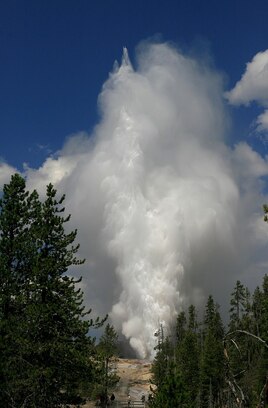 By Bpnjensen - Own work, CC BY-SA 4.0, https://commons.wikimedia.org/w/index.php?curid=72122121 By Bpnjensen - Own work, CC BY-SA 4.0, https://commons.wikimedia.org/w/index.php?curid=72122121 In this post I will show a few things. First, I will detail information about Steamboat Geyser, where it is located, and how each eruption's seismic signatures are composed of surface vibrations. Secondly, I will show how you can monitor for and predict Steamboat eruptions yourself. Please click the title of this post or "read more" to continue... What is Steamboat Geyser? 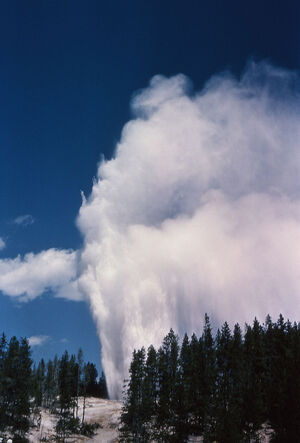 Steamboat eruption in the 1960s: By EE Mackin - http://www.nps.gov/archive/yell/slidefile/thermalfeatures/geysers/norris/Images/05757.jpg http://www.nps.gov/archive/yell/slidefile/thermalfeatures/geysers/norris/Page-2.htm, Public Domain, https://commons.wikimedia.org/w/index.php?curid=1594807 Steamboat eruption in the 1960s: By EE Mackin - http://www.nps.gov/archive/yell/slidefile/thermalfeatures/geysers/norris/Images/05757.jpg http://www.nps.gov/archive/yell/slidefile/thermalfeatures/geysers/norris/Page-2.htm, Public Domain, https://commons.wikimedia.org/w/index.php?curid=1594807 Steamboat Geyser is currently the largest active geyser on the face of the planet. It can produce some of the largest and tallest hydrothermal (water) eruptions known to mankind. It resides at Yellowstone Caldera within the infamous Norris Geyser Basin. A geyser is formed when water interacts from heat generated by a sub-surface magma system. The heat from the magma then percolates the super-heated water towards the surface eventually leading to a geyser eruption. Water is then replenished into the system via groundwater, rainfall, and snow melt. This is how a geyser can be active for virtually an endless amount of time. Steamboat Geyser saw very heightened unrest in the 1960s and 1980s. The all-time record for one calendar year was 29 eruptions in 1964. Then, in 2018, the all-time yearly record was shattered with 32 eruptions. Then, in 2019, that record was shattered with the 33rd eruption of 2019. At this current date, which is September 6, 2019, Steamboat is set to erupt again in a few days. The current total at the time of writing this is 34 eruptions for 2019. That number will likely be higher when the year ends. It is very possible the 2018-2019 Steamboat sequence is the most active it has been since they discovered Steamboat Geyser. Why are Steamboat's eruption signatures surface vibrations? As some may know, there is a seismic station at Yellowstone that allows you to monitor for the main Steamboat Geyser eruptions. It is station YNM in the WY network which resides within the Norris Museum. Here you will see what the eruption looks like via helicorders plots and also waveform and spectrogram plots. I will get to how to monitor for Steamboat eruptions in just a minute. Now, the seismic signatures of each Steamboat Geyser eruption is composed of surface vibrations only. There are a few aspects of these signatures that indicate this is the case:
How to monitor Steamboat for major eruptions: There are a multitude of ways to monitor for hydrothermal eruptions at Steamboat Geyser. In my opinion, the 2 best ways are seismic data and temperature data. I will talk about temperature data when I get into how to "predict" Steamboat eruptions, but let's talk about the seismic data. There are multiple sources to monitor the helicorder/webicorder plots of stations YNM and YNR for Steamboat eruptions. You can use the isthisthingon.org/yellowstone website, CLICK HERE for that, or you can use the University of Utah website, CLICK HERE for that. Here is where to find YNM on the isthisthingon.org/yellowstone website: If you wish to see a more in-depth look at the seismic signatures of Steamboat eruptions, please download data via the IRIS Data Select tool and open in the program SWARM. My many pages in the "How To..." menu can teach you how to do that. Here is what a Steamboat eruption looks like on a webicorder/helicorder plot. One is from YNM and the other is from YNR. This is the 32nd eruption of 2019 which occurred at 04:23UTC on August 13, 2019 (10:23pm Mountain Time, August, 12, 2019). Notice the spikes during the daylight hours? Well, those are footsteps and human activity from within the Norris Museum. Same thing occurs with the seismic station within the Johnston Ridge Observatory at Mt. St. Helens. Now here is what those same signatures, from both stations, looks like via my custom plots generated by the seismic program SWARM with data obtained through IRIS. Note the dominant high frequencies, shown on YNM via the spectra plot, of about 25Hz - 44Hz: How to predict a Steamboat eruption: To start, this will NOT show you how to predict an eruption down to the hour or day. It will, however, give you the ability to know the eruption is just around the corner. For this example we are using temperature data from a thermometer placed in one of Steamboat's outflow channels. NOTE: The Sept. 12, 2019 eruption proved this method does not work 100% of the time. However, precursors were constant until the eruption occurred. They simply lasted much longer than expected. Watch this quick video first. Credit to USGS/YVO - Michael Poland: As YVO scientist-in-charge Michael Poland said, the Steamboat temperature gauge can detect minor eruptions anywhere from 2 to 3 days prior to a major Steamboat eruption. In a way, this can serve as a precursory signal. When a Steamboat eruption nears, minor eruptions and activity increase. Therefore this can be used to detect when a Steamboat eruption will occur. Obviously the precursor time periods vary, but the main Steamboat eruption usually occurs around 2 to 3 days after the precursor events begin. Once the main eruption occurs, normal background activity resumes. This can be witnessed in the following image: Isn't that interesting? Now, given that knowledge, look at the plot below. you can see 3 main Steamboat eruptions with clear precursors. The next precursory activity has not started, but if Steamboat holds its usual schedule, it will show precursors in the next day or so. Use the Steamboat temperature gauge to judge if a Steamboat eruption is near or not! However, how do you find this data? Go to volcanoes.usgs.gov/volcanoes/yellowstone/ and click "monitoring". Then zoom in to the Norris area and click the "instruments visible" tab. Then click "hide all" and click "Temperature" for easy finding. The following is the location of the Steamboat Geyser temperature gauge. Use this to monitor for precursor signs that Steamboat is about to erupt. I hope this post helped you understand what Steamboat Geyser is, how to monitor for eruptions, and how to use precursor signs to prepare for the next eruption. Are there any mistakes? Please do not hesitate to let me know!
0 Comments
Leave a Reply. |
AuthorBen Ferraiuolo is a fast learner and someone who will always stand for the truth. Visit "About Me" for more! Archives
November 2019
Categories |
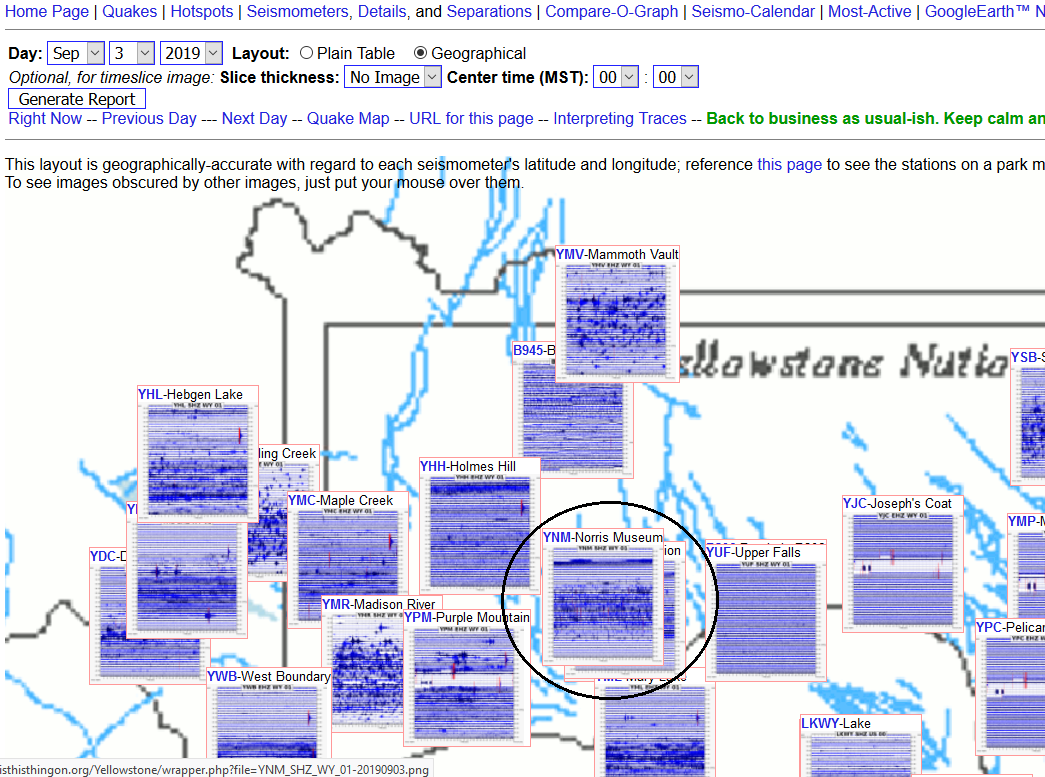
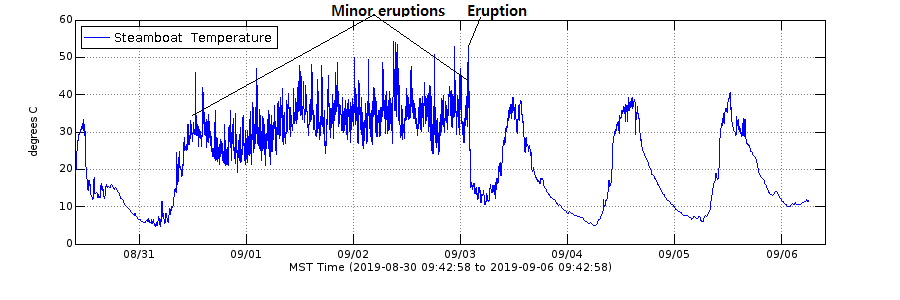
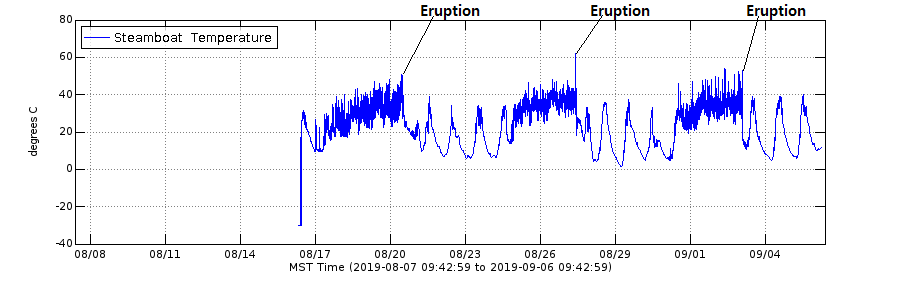
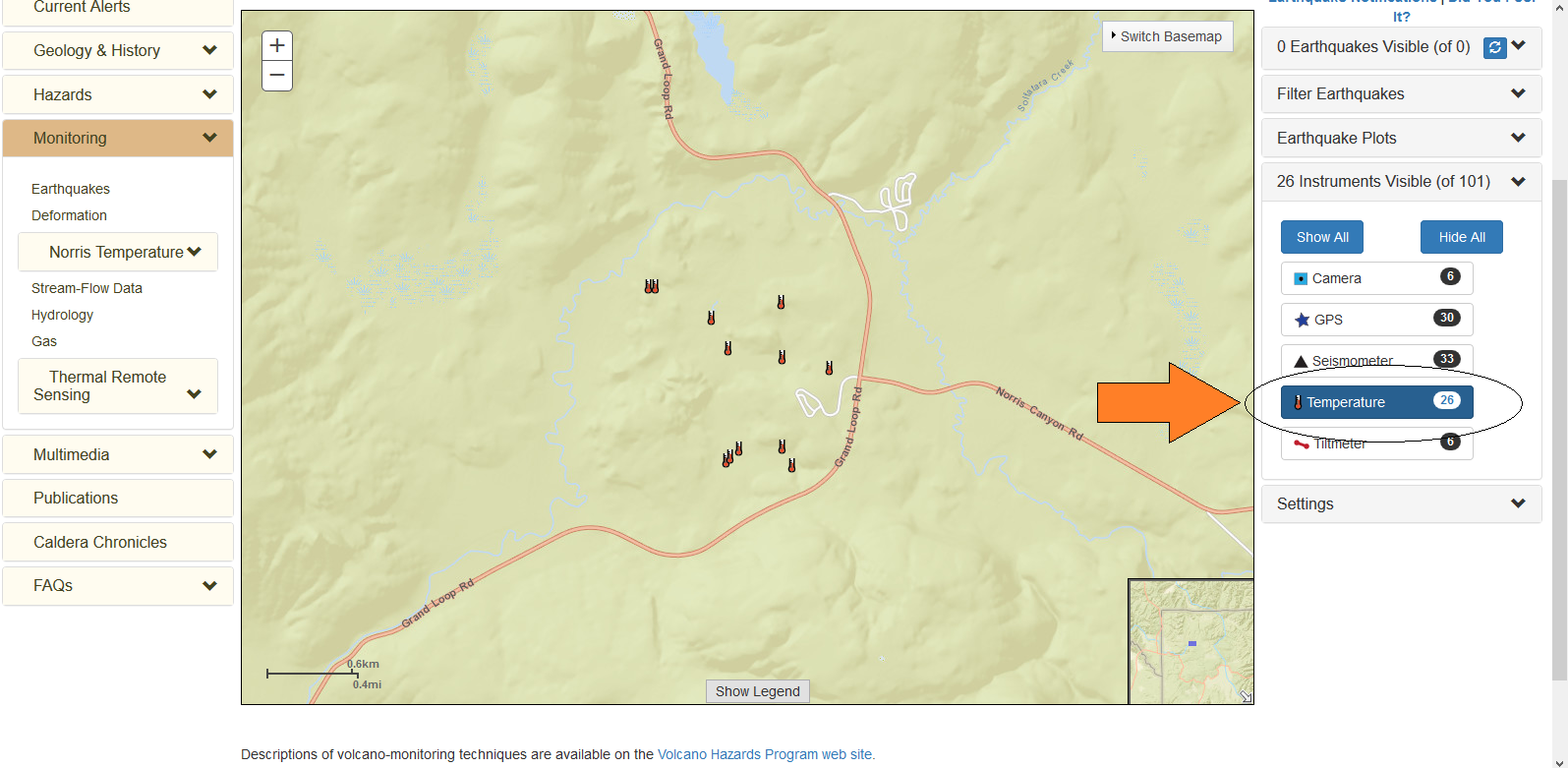
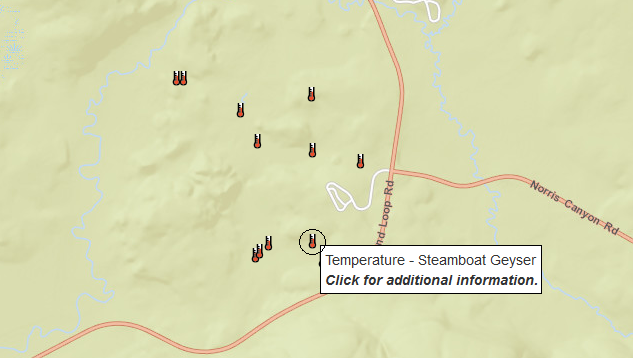
 RSS Feed
RSS Feed